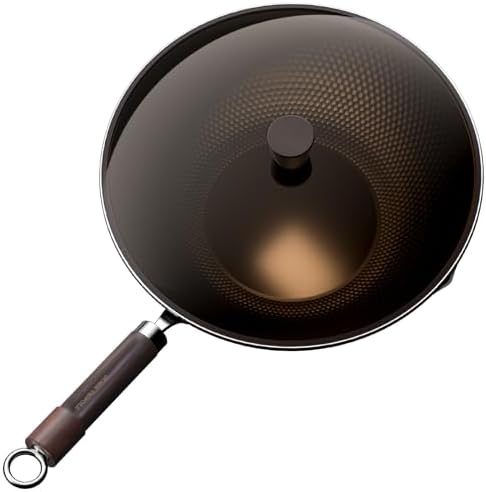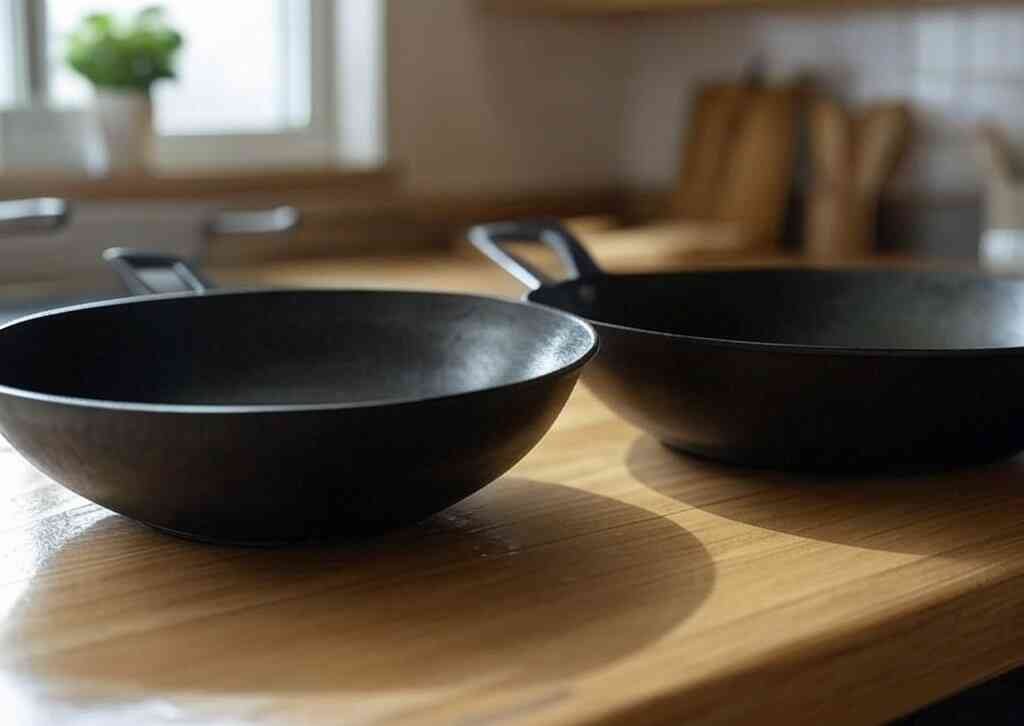What is Carbon Steel and Why Choose a Wok?
Carbon steel is an alloy of iron and carbon. It combines the strength of cast iron and the lightness of aluminum. Its long life has earned it a top selection among professional cooks and home cooks alike. It retains heat well and responds quickly to temperature changes. Its compatibility with high-heat cooking techniques such as stir-frying, common in Asian cuisine, renders it a necessity in the kitchen.
How It Ranks Compared to Other Material
Carbon steel woks have several advantages over stainless steel or non-stick pans. Stainless steel resists corrosion and scratches but fails to heat evenly. This may lead to hot and cold spots while cooking. Non-stick pans are easy to use but are not best for the high heat needed for stir-frying. Carbon steel heats evenly and very quickly, offering excellent temperature control. This is essential to achieve a good sear on vegetables and proteins.
Natural Non-Stick Surface and Versatility
Carbon steel in the long run acquires a natural non-stick surface if seasoned properly. The seasoned coating infuses flavor and does not allow food to stick. They are highly versatile too. They are not just limited to stir-frying, but can be employed for braising, steaming, and deep-frying. Since they can work at high heat levels, they are indispensable in home and restaurant kitchens.
Benefits of Using a Carbon Steel Wok
Forms a Natural Non-Stick Surface
Carbon steel woks are gaining popularity because they have many advantages. Among them is the natural non-stick surface formed through the use of them. Compared to factory-applied finishes, this surface improves with time. When cooking, the heat and oil leave behind a seasoned coating, making it easier for food to release and reducing excess fat.
Perfect for High-Heat Cooking
One of the biggest benefits is the way that these woks handle heat. The depth and rounded shape make food distribute even heat and cook quickly. This shape works best for searing and trapping flavor, especially while stir-frying. Controlling the heat in this way is imperative in producing traditional dishes.
Multifunctional and Long-Lasting
Carbon steel woks are not just for stir-fry. You can use them to deep-fry, steam, or braise. They’re so versatile that they’re a must-have item in every kitchen. Whether you’re preparing a quick dinner or having guests around, a carbon steel wok will suffice. And, if taken care of, they last decades. A seasoned wok only gets better with time and gives your food unique flavor.
How to Season Your Carbon Steel Wok
Step-by-Step Seasoning Process
Seasoning your wok prepares it for cooking and builds a non-stick surface. Start by choosing a high smoke-point oil, like grapeseed, canola, or peanut oil. You’ll also need paper towels, a soft cloth, and a stove or oven.
First, clean the wok with hot water and a non-abrasive sponge. Avoid soap as it removes protective coats. Once cleaned and dried, lightly oil the whole interior with a paper towel.
Heating the Wok
Place the oiled wok on medium-high heat. As it heats, the oil will start to smoke. Rotate the wok so heat distributes evenly. You’ll notice the surface turning golden-brown. This means the seasoning is working.
If your wok is smoking too much or sticky, you may have added too much oil or have used too intense of a heat. Tweak as needed. Your wok will be good to go for high-heat cooking and will keep improving with use once done.
Taking Care of Your Carbon Steel Wok for Long-Term Use
Cleaning After Use
To keep your wok in good condition, perform regular maintenance after seasoning. Avoid using soap since it can strip away the seasoned layer. Hot water and a soft sponge can be used instead. Coarse salt or a wooden spatula can be utilized to deal with stubborn residue.
Preventing Rust
After cleaning, dry the wok properly. You can place it on low heat for a few minutes to evaporate excess moisture. Re-season the wok by applying a thin layer of oil and re-heating if needed.
Storage Tips
Dry place your wok. When stacking, place a paper towel to exclude moisture and scratches. Do not cover it tightly leaving some air to circulate keeps rust away. With proper care, your wok will last for years, adding value to your cooking.












[…] stoves are common in many modern kitchens, but not every wok works well on them. Choosing the right wok for your electric cooktop can make a significant difference in […]
[…] Carbon steel woks are a favorite of food aficionados due to their unique characteristics that foster cooking practices. In contrast to other materials used in cookware such as stainless steel or cast iron, carbon steel boasts unmatched heat retention and circulation. When heated adequately, carbon steel woks can achieve extreme temperatures quickly, making them ideal for stir-frying. The sensitive thermal response enables cooks to yield precise results, particularly when carrying out practices such as searing or browning. […]
[…] steel woks because they conduct heat exceptionally well and are sensitive to changes in heat. Carbon steel woks heat quickly and evenly, allowing the precise control required in methods such as stir-frying. You […]